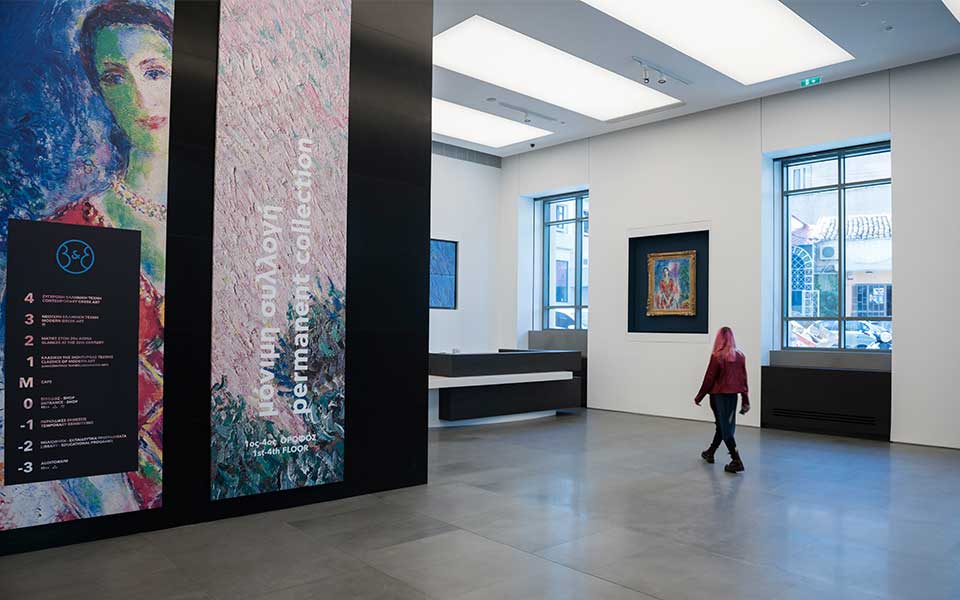“Everyone wants to understand art. Why don’t we try to understand the song of a bird? Why do we love the night, the flowers, everything around us, without trying to understand them? But in the case of a painting, people think they have to understand,” Pablo Picasso once said.
When we are children, we first perceive the world through our senses. First come the images, and then the words. I studied history of art because, even now that I can use words, I continue to think in images. When you first visit the new museum of the Basil and Elise Goulandris Foundation on Eratosthenous St, don’t attempt to explain anything. Surrender yourself to everything that you feel, observing the museum inside and out, on the edge of the central Athens neighborhood of Pangrati next door to the Panathenaic Stadium.
In July, when Kathimerini photographer Vangelis Zavos shot the first photos from the museum, there was only the architecture to supply the first pieces of a puzzle that was 30 years in the making. At first there was just the white marble and the natural curves of the interior staircase giving a sense of flow.
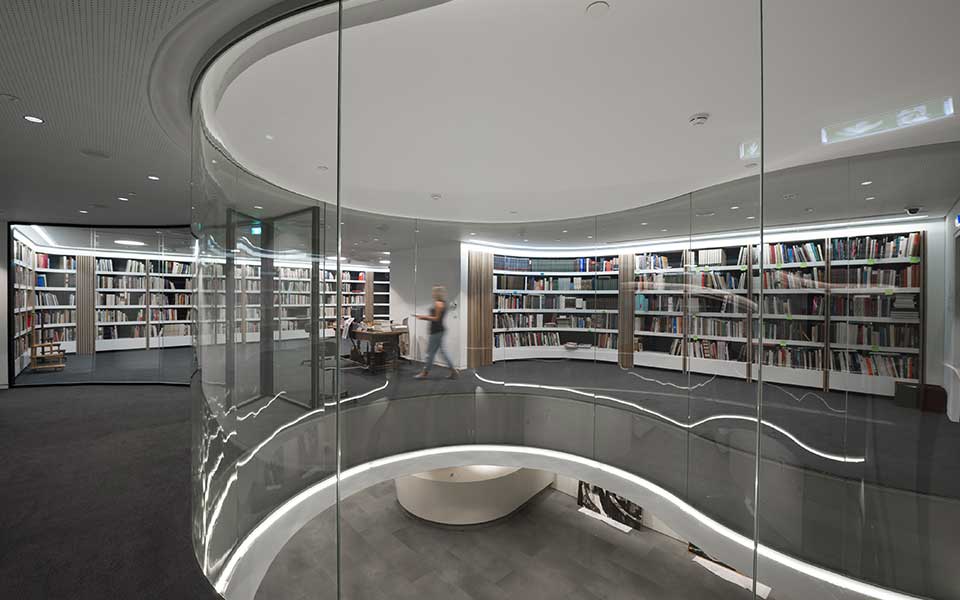
© Vangelis Zavos
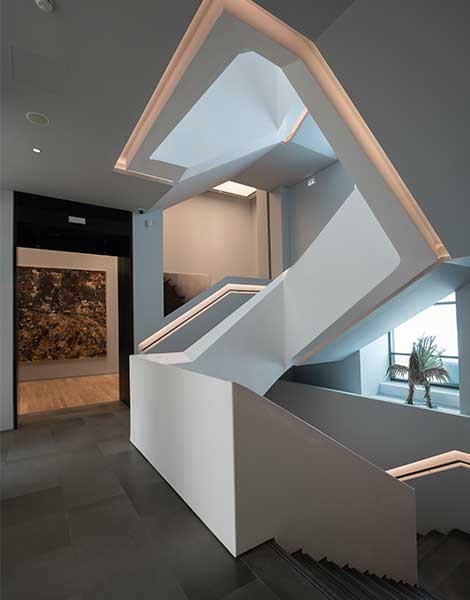
© Vangelis Zavos

© Vangelis Zavos
The sculptures then followed, which appear before you unexpectedly in every alcove of the eleven floors of the new museum, keeping us on our toes from the first step along this adventure that the foundation’s president, Fleurette Karadonti, dubbed “loving and discovering art”.
In the basement there is still only a piano, shrouded in a dark green velvet cover, but it is not some modern art installation. It is simply a part of the space where future traveling exhibitions will be hosted at the museum, the first of which has been scheduled for autumn 2020.
It is September, and on this visit the first thing that I see is the iconic portrait of Elise Goulandris by Marc Chagall, created in 1969. Approaching, I see that Elise is not alone in the painting. The faint outline of her husband, Basil Goulandris, hovers over her, with the artist capturing in a painting the essence of a discreet relationship, that of a couple that was together in life and in art.
I then look at the colors visible outside the window, a rectangle of orange from a shop across the road, the deep green of the surrounding awnings, the ochre of the church of Aghios Spyridonas next door to the museum, and it all reminds me of color as used by Cézanne. Color as structure.
Like the foreshadowing in Homer’s epics, all of this prepares me for what I will see on the next floor.
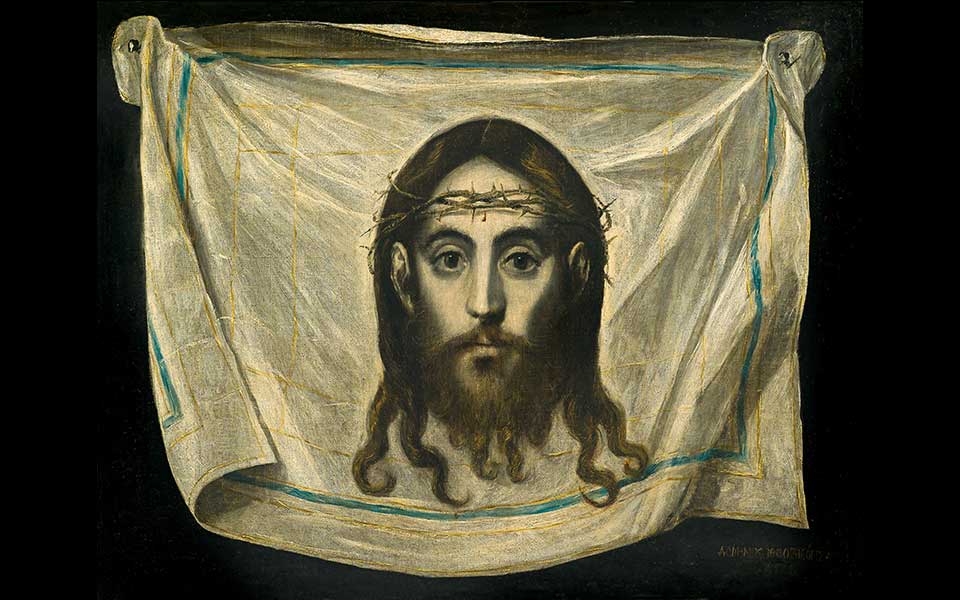
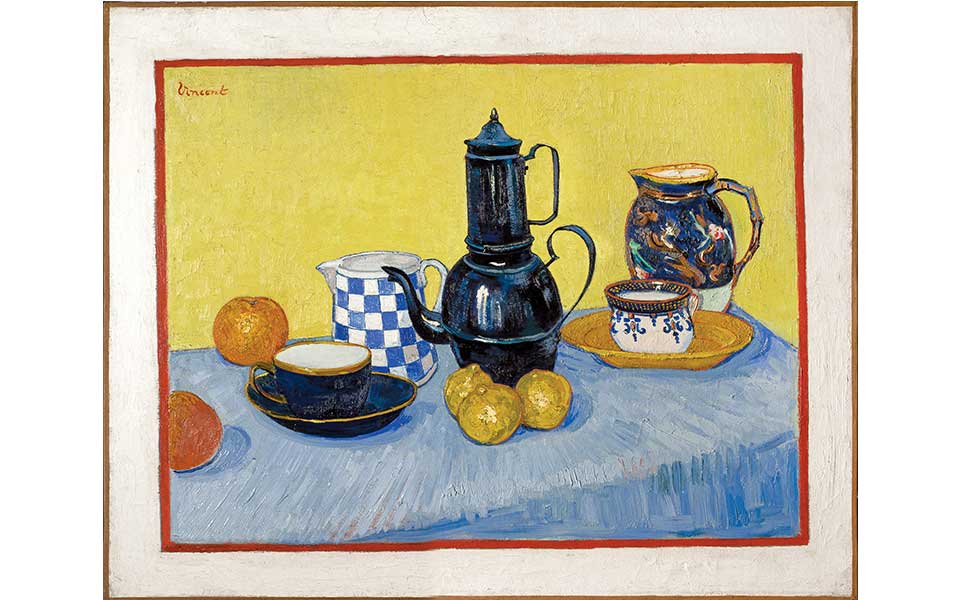
A Collection full of emotion
But nothing can prepare you for the moment that you see firsthand El Greco’s “Veil of Saint Veronica”, the first artwork purchased by Elise and Basil Goulandris in 1956.
“This is a personal collection. The works they chose, they lived them; they enjoyed them in their daily lives; they discussed them with their friends and they constantly explored the dialogue between the works every time they repositioned them,” says Maria Koutsomalli, head of the collection of the Basil and Elise Goulandris Foundation.
In my eyes it appears to be a collection filled with emotion, with subtle connections that lead from El Greco’s ascetic figure of Christ to the ascetic life of Van Gogh and his painting “Still Life with Coffee Pot” which depicts the painter’s sole belongings when he moved to Arles alone, without even a bed to sleep in.
On this first tour, a number of days before the official opening on October 1st, the labels for the paintings have yet to be installed, but I immediately recognize the small self-portrait of Cézanne, “the father of us all,” as Picasso had said, and the father of this collection, as it was the second and most important work that was purchased.
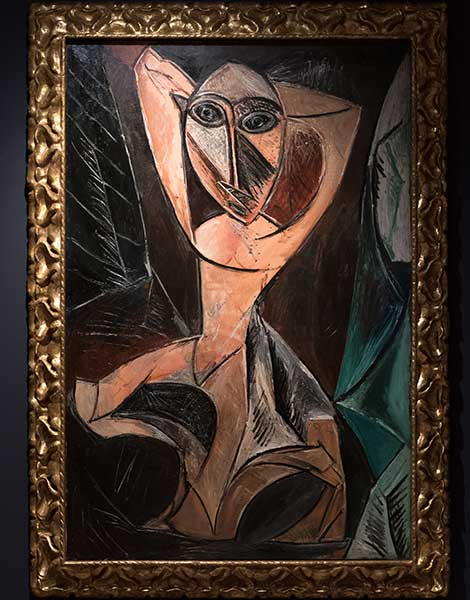
© Vangelis Zavos
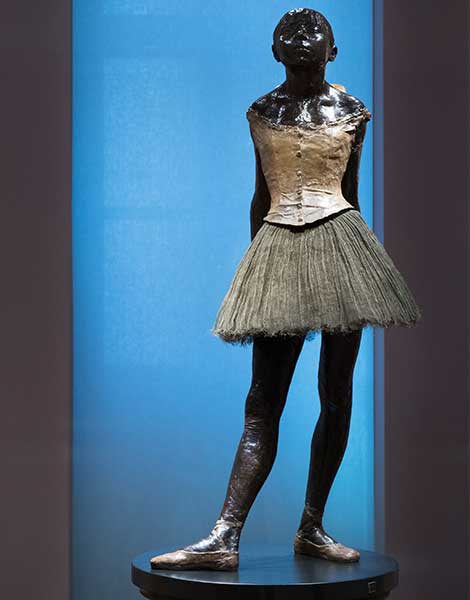
© Vangelis Zavos
Cézanne’s gaze leads me across the hall, to Monet’s work, “Rouen Cathedral in the Morning (Pink Dominant)” with its pastel shades reflecting those of the adjacent work “Olive Picking” by Van Gogh.
The youthful lightness of Degas’ “Little Fourteen-Year-Old Dancer” converses with the optimistic surrealism of “Grasshopper” by Joan Miró and “Young Man with Bouquet” by Picasso, a work from 1905. A sweet young man who works in a circus looks into my eyes as if seeking my approval. “Nude Woman with Raised Arms”, the second Picasso work in the collection which dates to 1907, couldn’t care less.
Painting has now become geometry. And the mask that it wears as a face appears to be telling me, “I am like this and I don’t care if you think I am beautiful or not.” The expressive sculptures of Auguste Rodin and Camille Claudel, another couple that joined forces in life and art, make the final painting next them etch itself into my memory all the more deeply – “Le Solitaire” by Georges Braque. It is 1942 and the woman in the painting is drinking wine and turning over the cards, waiting to find out whether her lover will return from the Second World War.
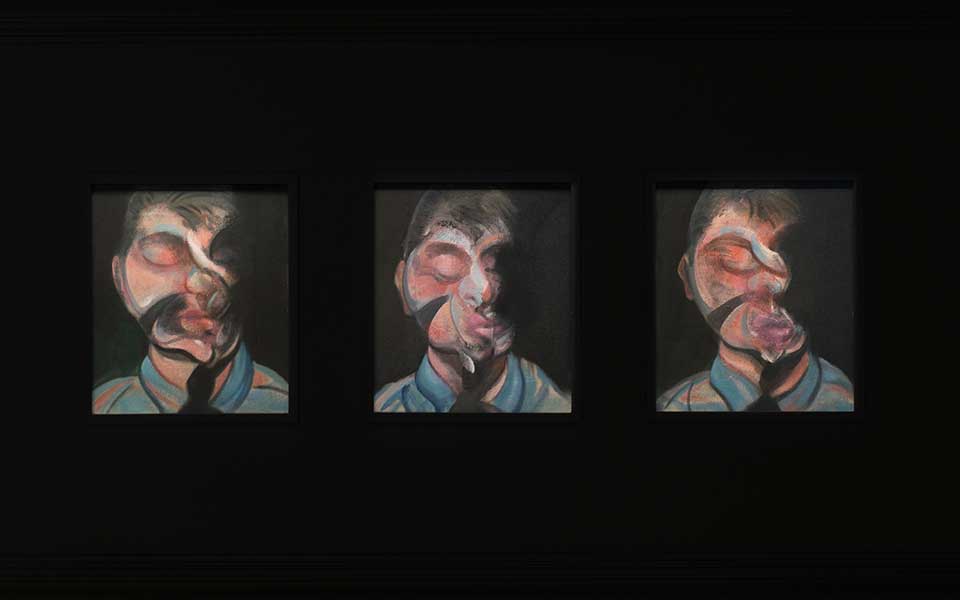
© Vangelis Zavos
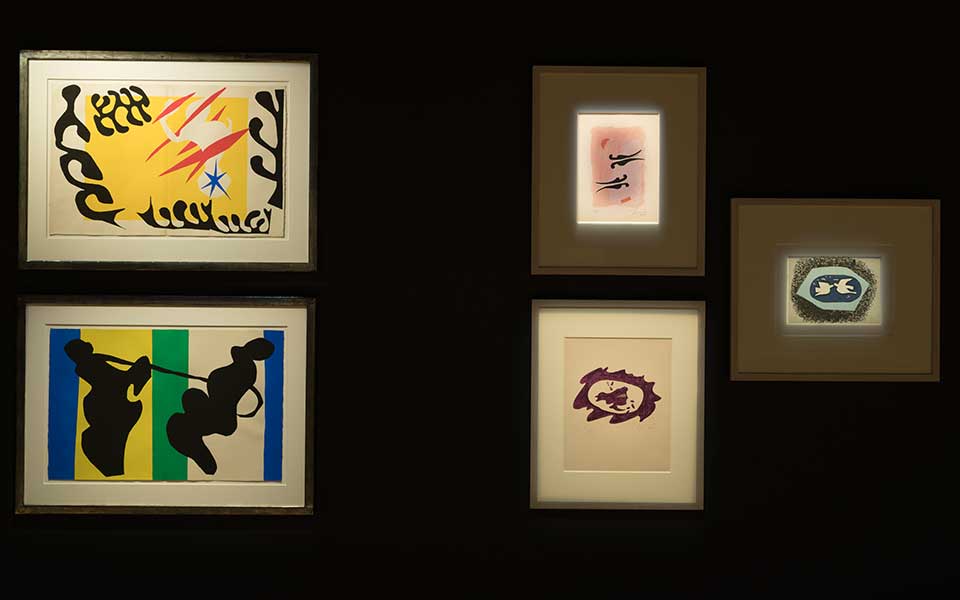
© Vangelis Zavos
New Beginnings
On the next floor, WWII has ended. There is the desire for a new beginning, evident in Lichtenstein’s pop-art “Sunrise”. Legér avenges the dead through intense colors, lyricism coexisting with abstraction. Pollock paints energetically over baseball boardgames, Klee and Hundertwasser try to understand the “human head” and the existentialism in the Giacometti sculptures evinces “a sensitive humanity that stands and persists, despite the fact that it can fall at any moment,” Ms Koutsomalli says. People improvise, such as Matisse for the series that he created using a collage technique when he was seriously ill.
This floor is also filled with sketches on paper by artists such as Modigliani and de Chirico, sketches that ended up surviving the test of time. Anselm Kiefer and Francis Bacon remind us how vulnerable man is and how painful life can be, but love comes to save the day once more, and I stop to look at the sculptures of the avant-garde couple Barbara Hepworth and Ben Nicholson, as well as the Goulandris couple’s important collection of French furniture with which they decorated their homes.
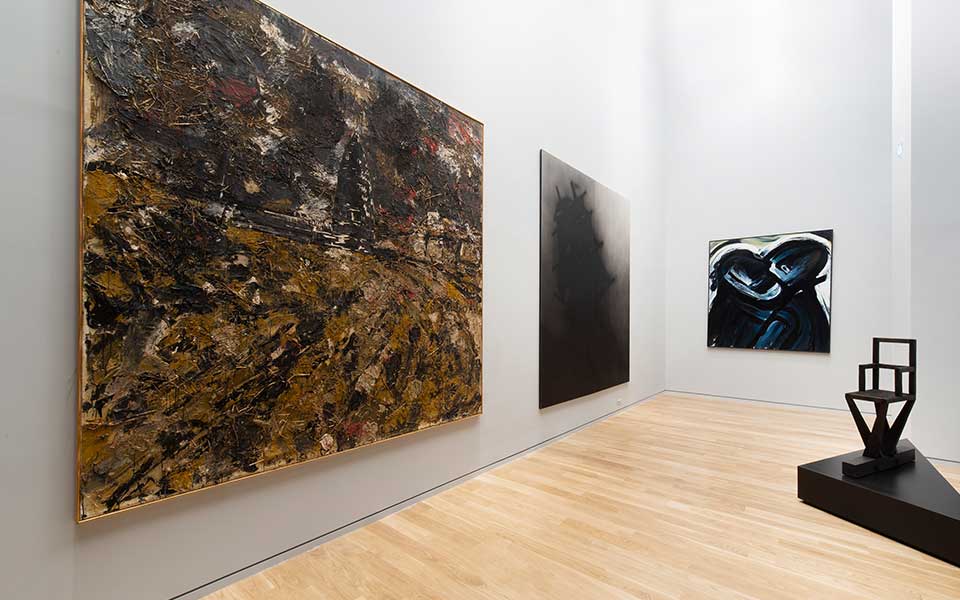
© Vangelis Zavos
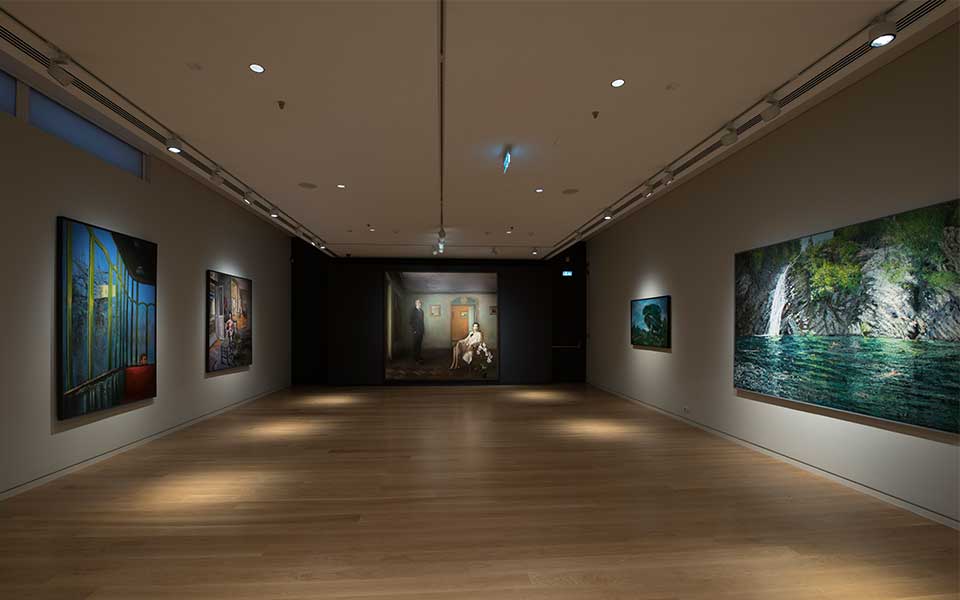
© Vangelis Zavos
The Greek Floor
On the next two floors one finds early Parthenis, the characteristic works of Hadjikyriakos-Ghikas, and the portrait of Giorgos Seferis by Makris which reminds us that on small Agras Street next to museum stands the home where the Greek poet once lived.
There is the island of Hydra as depicted by Veroukas and Tetsis, “Anodos” by Opy Zouni, Tsarouchis’ “Sailor Sitting at the Table”, Moralis’ “Erotic” and works by Gaitis, Samios, Tsochlis, Sophia Vari, Fassianos, Mytaras and Bouzianis. They are all here, and I finally come back to where I began, at one more portrait of Elise and Basil Goulandris, this time by George Rorris.
Five different generations of artists, and so many generations of people who will look upon their work for the first time.
“Art does not divide, art unites,” the director of the Basil and Elise Goulandris Foundation, Kyriakos Koutsomallis, will say on the day of the press conference, shortly before the new museum opens its doors to the public on October 2.
And that is its most important role.
This article was first published in Greek in Kathimerini’s “K” magazine on 29/09/2019.

